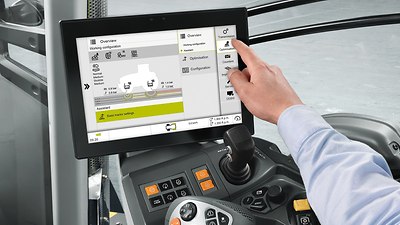
With the integration of the Terranimo® application in CEMOS for tractors, users now have another driving strategy available in addition to efficiency and productivity: soil protection. From summer 2022, Terranimo® will be part of the standard range of CEMOS functions for tractors.
The groundbreaking and still the only self-learning, interactive driver assistance and process optimization system, the functionality of CEMOS for tractors has been further expanded. The Terranimo® application will be fully integrated in CEMOS for tractors from summer 2022, which will enable the tractor-implement setting to be even more focused on soil protection.
Terranimo® is a simulation model developed by the Bern University of Applied Sciences (BFH-HAFL) in cooperation with the Agroscope Reckenholz research institute, Aarhus University in Denmark and the Swedish University of Agricultural Sciences (SLU), which calculates and visualizes the risk of harmful compactions. The algorithms are based, among other things, on decades of accumulated expertise. In CEMOS for tractors, they are combined with the current available parameters, such as soil type and soil condition, working depth, field condition (uncultivated, shallowly tilled or deep tilled), attachment, tire type, ballasting and a few more, so that there is no further effort involved in using Terranimo®.
Based on the combined information and the technical mechanics calculated by CEMOS (e.g. static and dynamic axle loads), Terranimo® calculates the compaction risk separately for three soil layers. On the basis of this risk assessment, CEMOS can provide the driver with further recommendations for ballasting and optimizing the tire pressure in order to drive in a way that protects the soil. If the driver changes the settings for the tractor-implement combination, such as the tire pressure, based on the compaction risks and the recommendations derived from them, this information flows directly into the current risk assessment of the Terranimo® function. As a result, the driver will receive direct feedback on the effect that changing the settings will have.